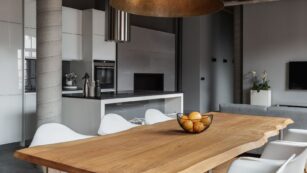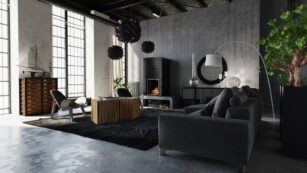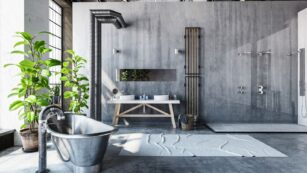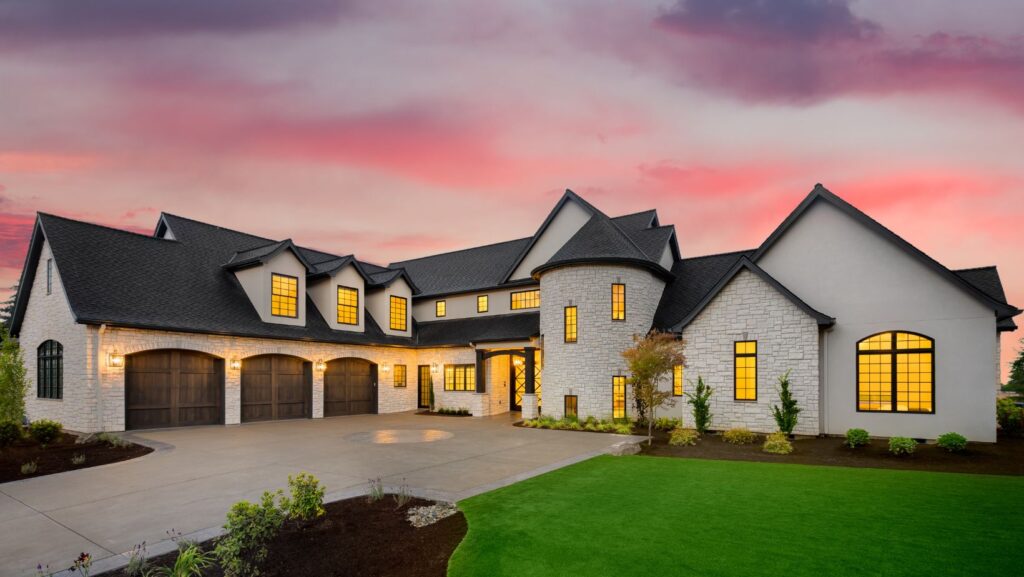Ever wondered how to blend the raw, edgy aesthetics of industrial spaces into the comfort of your home? Welcome to the world of industrial home design, where the seemingly incompatible worlds of factory and home fuse to create a unique, captivating style.
Industrial home design is no fleeting trend. It’s a design philosophy that celebrates the stripped-back architecture of warehouses, factories, and other industrial structures.
Industrial Home Design
Origins of the Style
Born in the architectural womb of the 20th-century urban landscape, the industrial home design finds its roots in warehouses, factories, and other industrial structures. Common in major cities like London, New York, and Berlin, it grew out of necessity when old industrial spaces were repurposed into residential lofts. Artists favored these transformed spaces, intrigued by the spacious area coupled with architectural elements left untouched – bricks, steel, exposed piping, and concrete.
Key Elements and Features
 The beauty of industrial home design lies in its apparent simplicity and raw appeal, manifested in several key elements.
The beauty of industrial home design lies in its apparent simplicity and raw appeal, manifested in several key elements.
-
Exposed Materials: Industrial design champions the ‘unfinished’ look, leaving building materials exposed. Examples include brick walls, concrete floors, and visible pipes.
-
Neutral Color Palette: The design leans toward neutral colors like grey, black, and white. Touches of rustic colors supplement these bases, symbolizing its ties to the industrial-era factories.
-
Use of Metal and Wood: Metal features heavily in industrial design, found in light fixtures, furniture, and accessories. This metal often pairs with reclaimed or aged wood, creating contrast and adding warmth to the space.
-
Open Floor Plan: Resonating the spaciousness found in old factories and warehouses, industrial design prefers open, airy spaces. High ceilings, large windows, and minimal partitions are common features.
-
Statement Lighting: Industrial-style lighting plays a critical role, with pendant lights, Edison bulbs, and metallic fixtures being iconic identifiers.
Through these characteristic traits, industrial home design translates the grit and boldness of industrial spaces into a uniquely warm and aesthetic home environment.
How to Implement Industrial Design in Your Home
After delving into the origins and essentials of the industrial design aesthetic, the question arises – how can you incorporate this unique style into your personal space? Implementing industrial home design involves a mix of bold choices and restraint, along with a keen eye for design elements that celebrate the raw industrial appeal.
Choosing the Right Materials
 One major aspect of industrial home design lies in the strategic selection of materials. Industrial aesthetic cherishes raw, unfinished materials that bring a feeling of authenticity and vintage appeal. Examples of these materials include exposed bricks for walls and backsplashes, distressed wooden elements for furniture and floors, and an abundant use of metals like iron, steel, and copper for fixtures and accents.
One major aspect of industrial home design lies in the strategic selection of materials. Industrial aesthetic cherishes raw, unfinished materials that bring a feeling of authenticity and vintage appeal. Examples of these materials include exposed bricks for walls and backsplashes, distressed wooden elements for furniture and floors, and an abundant use of metals like iron, steel, and copper for fixtures and accents.
Steel and copper, for instance, are great for creating a strong industrial vibe. They’re often used for exposed pipes, kitchen hoods, and lighting fixtures. Concrete, yet another material rich in industrial design history, proves effective for flooring, countertops, and even walls.
Distressed wood adds texture and warmth to the industrial style. Use it for flooring, furniture, or open shelving.
Finally, remember the principle of balance. Avoid making the entire house look like a hardcore factory. Instead, blend industrial elements with softer touches like cozy textiles and homey accessories to ensure a welcoming and captivating home environment. Implementing industrial home design, therefore, involves embracing materials’ raw beauty while striking the perfect balance between industrial boldness and homey warmth.
Benefits of Industrial Home Design
 Industrial home design boasts both aesthetic appeal and functional advantages. Firstly, it’s characterized by a high degree of flexibility, with unfixed layouts and modular furniture that can be adapted to diverse living requirements. Unlike restrictive architecture styles, industrial designs let homeowners alter spaces using sliding doors or open floor plans.
Industrial home design boasts both aesthetic appeal and functional advantages. Firstly, it’s characterized by a high degree of flexibility, with unfixed layouts and modular furniture that can be adapted to diverse living requirements. Unlike restrictive architecture styles, industrial designs let homeowners alter spaces using sliding doors or open floor plans.
Secondly, industrial design is inherently sustainable, repurposing older building materials such as reclaimed wood, rusted metals, or exposed bricks. This contributes to environmental preservation by reducing discard. It also adds a unique touch to homes, with each repurposed piece telling its own story.
Thirdly, it’s relatively cost-effective as it embraces unfinished aesthetics. Rather than investing heavily in finishing walls or ceilings, industrial designs leave them raw and exposed, saving on finishing costs.

